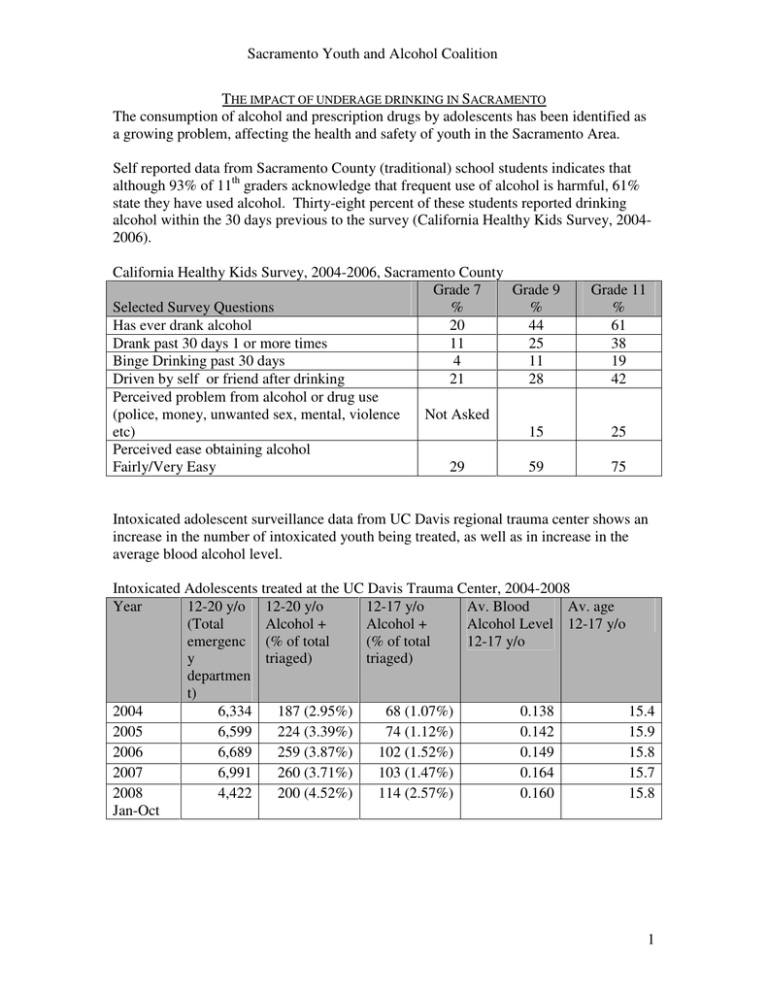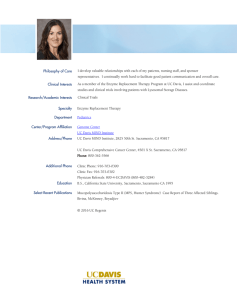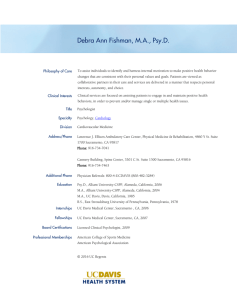
Sacramento Youth and Alcohol Coalition
THE IMPACT OF UNDERAGE DRINKING IN SACRAMENTO
The consumption of alcohol and prescription drugs by adolescents has been identified as
a growing problem, affecting the health and safety of youth in the Sacramento Area.
Self reported data from Sacramento County (traditional) school students indicates that
although 93% of 11th graders acknowledge that frequent use of alcohol is harmful, 61%
state they have used alcohol. Thirty-eight percent of these students reported drinking
alcohol within the 30 days previous to the survey (California Healthy Kids Survey, 20042006).
California Healthy Kids Survey, 2004-2006, Sacramento County
Grade 7
Grade 9
Selected Survey Questions
%
%
Has ever drank alcohol
20
44
Drank past 30 days 1 or more times
11
25
Binge Drinking past 30 days
4
11
Driven by self or friend after drinking
21
28
Perceived problem from alcohol or drug use
(police, money, unwanted sex, mental, violence
Not Asked
etc)
15
Perceived ease obtaining alcohol
Fairly/Very Easy
29
59
Grade 11
%
61
38
19
42
25
75
Intoxicated adolescent surveillance data from UC Davis regional trauma center shows an
increase in the number of intoxicated youth being treated, as well as in increase in the
average blood alcohol level.
Intoxicated Adolescents treated at the UC Davis Trauma Center, 2004-2008
Year
12-20 y/o 12-20 y/o
12-17 y/o
Av. Blood
Av. age
(Total
Alcohol +
Alcohol +
Alcohol Level 12-17 y/o
emergenc (% of total
(% of total
12-17 y/o
y
triaged)
triaged)
departmen
t)
2004
6,334
187 (2.95%)
68 (1.07%)
0.138
15.4
2005
6,599
224 (3.39%)
74 (1.12%)
0.142
15.9
2006
6,689
259 (3.87%)
102 (1.52%)
0.149
15.8
2007
6,991
260 (3.71%)
103 (1.47%)
0.164
15.7
2008
4,422
200 (4.52%)
114 (2.57%)
0.160
15.8
Jan-Oct
1
Sacramento Youth and Alcohol Coalition
Alcohol intoxicated adolescent residents of the City of Sacramento treated at UC Davis
Medical Center
Year
12-17 y/o patients
Average Blood Alcohol
2004
17
164.53
2005
21
149.14
2006
28
154.8
2007
37
176.9
Persons Killed and Injured where Driver has been drinking by Age of 15 through 20 in
Sacramento County (Statewide Integrated Traffic Records System)
Year
Injured
Killed
2006
214
10
2007
200
8
Vehicle Collisions in Sacramento City Involving Impaired Drivers Ages 15 through 17
Year
Total
Fatal
Injury
Victims
Victims
Collisions
Collisions
Collisions
Killed
Injured
2006
6
0
4
0
5
2007
0
2
0
5
5
2008 (Jan
through June 08)
0
3
0
7
3
Cost of alcohol involved medical care for 12-20 year olds at UCDMC during the month
of April 2007 exceeded $345,000.
Among women, binge drinking is uniquely associated with risky sexual behaviors and
sexually transmitted diseases. Women that binge drink have 5 times greater rate of
gonorrhea than non-drinking women (Hutton, 2008).
National statistics tell us that every day, 2,500 youth age 12 to 17 abuses a pain reliever
for the very first time. More teens abuse prescription drugs than any illicit drug except
marijuana. In 2006, more than 2.1 million teens ages 12 to 17 reported abusing
prescription drugs. Among 12- and 13-year-olds, prescription drugs are their drug of
choice. And similarly to alcohol, their number one supplier is those closest to them: 70%
report obtaining prescription drugs from friends or relatives (SAMHSA, 2008 National
Survey on Drug Use and Health [September 2007]).from friend or relative Drug Use and
Heal
Closer to home, the 2007-2008 California Student Survey reported: “The most significant
but disturbing overall finding of the 12th biennial survey is — because of
underassessment of recreational use of prescription and over-the-counter drugs — we
have previously underestimated actual levels of youth substance use. New data shows
that 37 percent of 9th and 50 percent of 11th graders used either an illicit/illegal drug or a
diverted prescription drug to get high at least once in their lifetime. Taking this into
2
Sacramento Youth and Alcohol Coalition
consideration, total lifetime use of alcohol and other drugs (AOD) is estimated at 52
percent and 69 percent respectively. Including use of cold/cough medicines to get high,
lifetime AOD 9th-grade use rises to 60 percent and 11th-grade use to 74 percent.”
Closer still, our 2004-2006 California Healthy Kids Survey aggregate data for
Sacramento County reveals the following lifetime use rates for prescription painkillers:
Use of prescription painkillers
O times
1 time
2 to 3 times
4 or more times
Grade 7
%
Grade 9
%
Grade 11
%
93
3
2
2
85
5
3
6
78
6
6
10
Non
Traditional
%
68
7
7
17
DATA COLLECTION
• Self-reported data sources:
o California Health Kids Survey – aggregate data for Sacramento County
2004-2006
o SAMHSA, 2008 National Survey on Drug Use and Health (September
2007)
• Alcohol related injury data sources:
o UC Davis Health System – Level 1 Regional Trauma Center
• Alcohol related motor vehicle collision data
o California Highway Patrol – Statewide Integrated Traffic Records System
(SWITRS)
• Alcohol related sexually transmitted disease data – Hutton, H.E, McCaul, M.E.,
Santora, P.B., Erbelding, E.J., The relationship between recent alcohol use and
sexual behaviors: Gender differences among sexually transmitted disease clinic
patients. Alcoholism: Clinical and Experimental Research 2008; 32(11), 20082015
3





